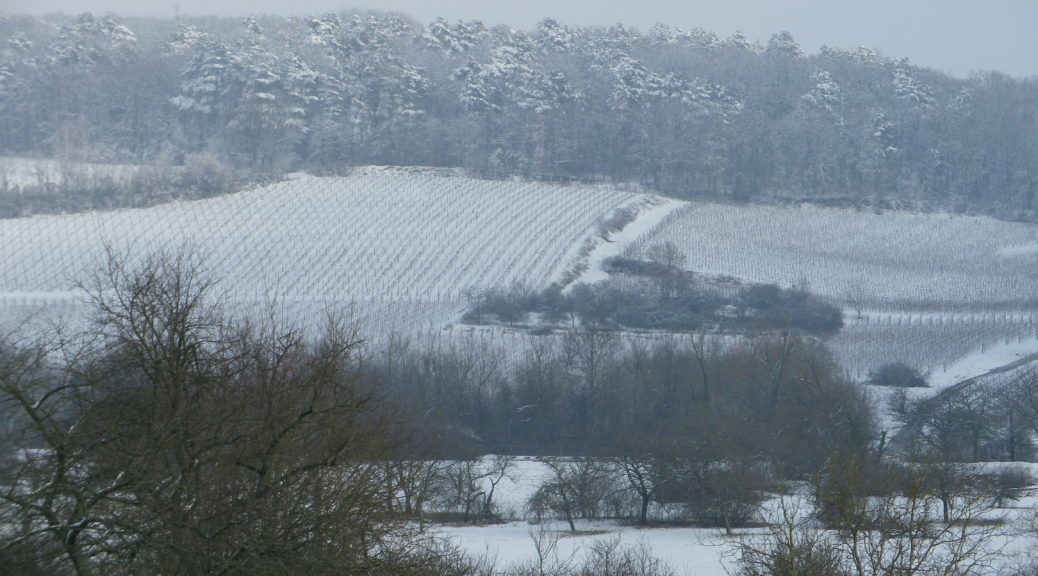It snows in many wine making regions. Maybe not as much as it snows in New England over the past couple of weeks, but it does snow, especially in the Sued Tirol and Alsace. Snow and cold temperatures are actually beneficial for vines, even if it is less than optimal for hiking. Thus, I found myself in Alsace two years ago, ready to hike, but wishing I’d brought my snowshoes.
The trail was called Parcours du Vigneron, a 13-kilometer hike through the vineyards on the slopes surrounding the small town of Rosheim. The vineyards, as well as the well-preserved town walls and gates, and some impressive Romanesque architecture, are the chief attractions of the town. This cleverly designed trail, provides ample opportunity to admire it all, and from a couple of different perspectives.
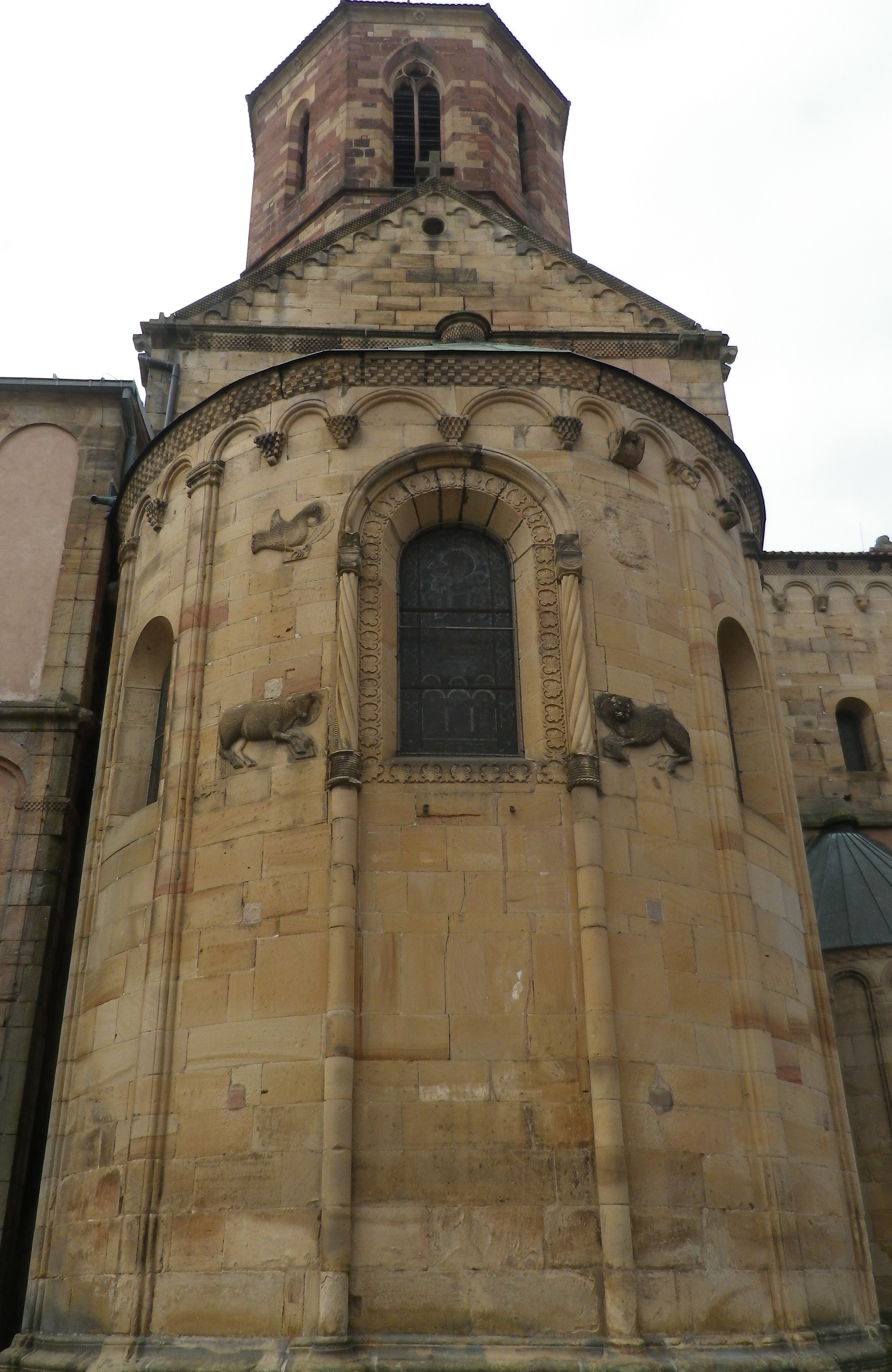
The trail begins in town. Walking straight through the historic center, I headed out through the western gate, known as the Zittgloeckeltor (or the Porte de l’Hotel de Ville). I knew from previous visits that the pine-covered Vosges began straight ahead, but due to the weather that day, they remained hidden from view throughout my hike. From the gate, I headed south, soon coming to a small park. Vestiges of wall lay to the north, making me wonder if this green space may once have been garden plots for the town residents. This region, claimed by both the French king and German emperor suffered numerous battles over the centuries. As several vintners told me, in Alsace, unlike much of the rest of France, while vineyards, fields and orchards lay outside the town walls, people and their business operations were integrally ensconced within the walls.
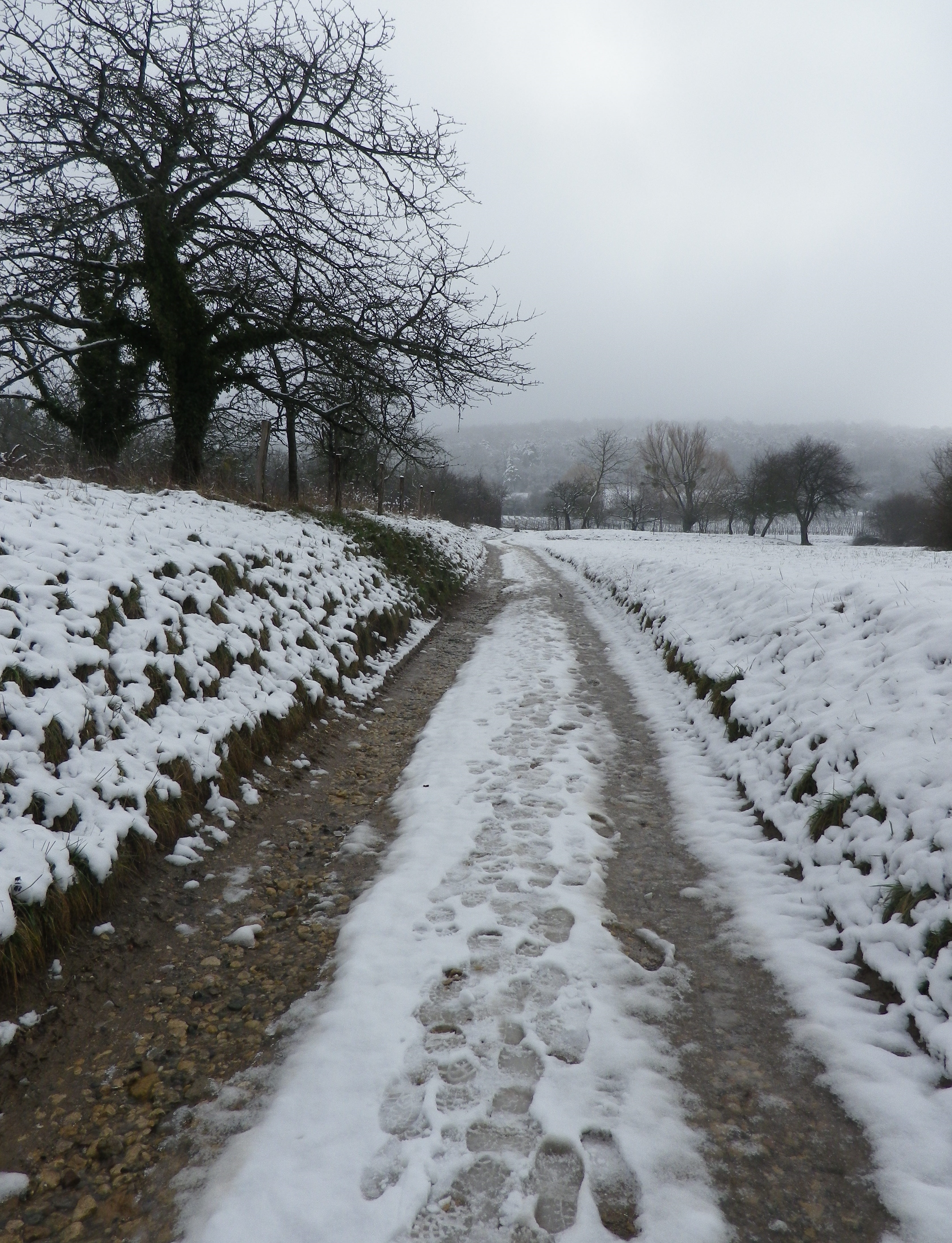
After passing a flat orchard area, I reached the first hill, and the first vineyards. While it was slippery going up the hill, the incline was really quite gentle. I soon came to the seemingly deserted hamlet of Le Kilbs. Within a minute or two, the trail entered a forested area, where fortunately, the snow was less deep.
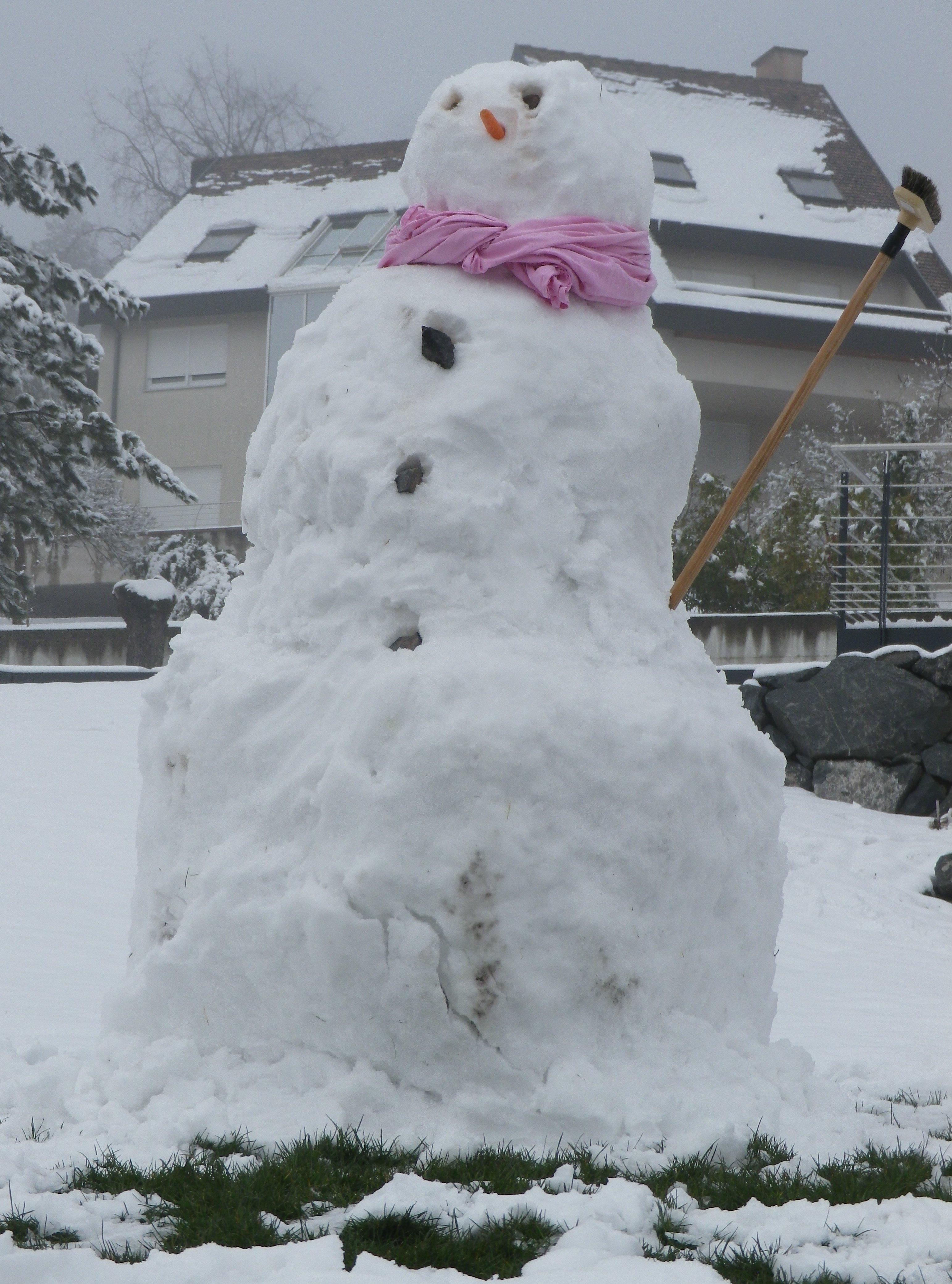
The southernmost point of the trail is Bischenberg, a name shared by a well-defined hill, a village and a convent. Hikers experience all three, as well as spectacular views south and east to the Black Forest mountains on a good weather day. But the fates determined that fog and snow would continue throughout my hike. However, I did have some good opportunities to try to capture photographically more than fifty shades of grey, black and white.
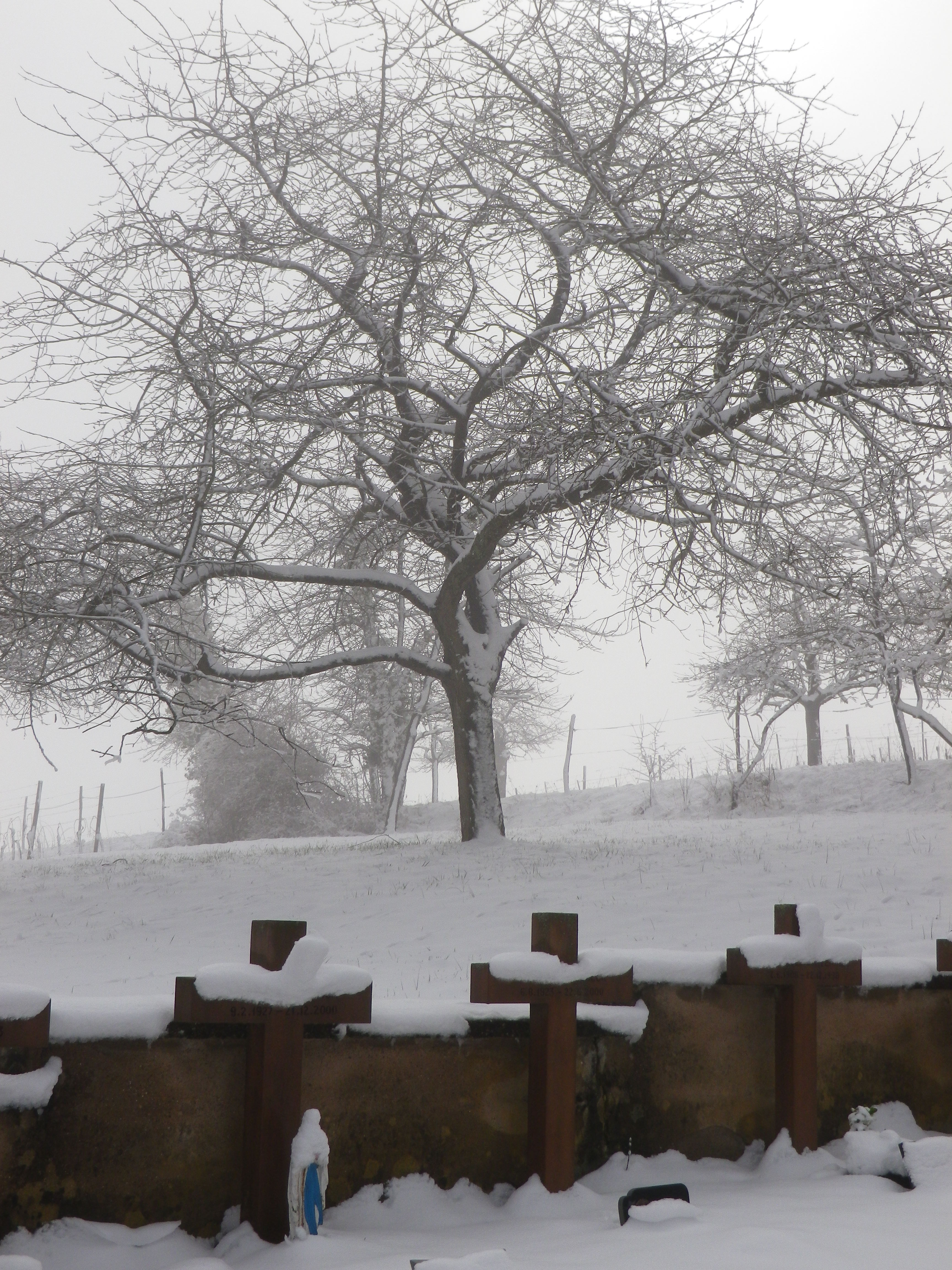
The way downhill, through fields, forests and vineyards, was interrupted by the Convent of Bischenberg and its outdoor calvary of the stations of the cross. It was noteworthy for its great state of preservation and unity of design.
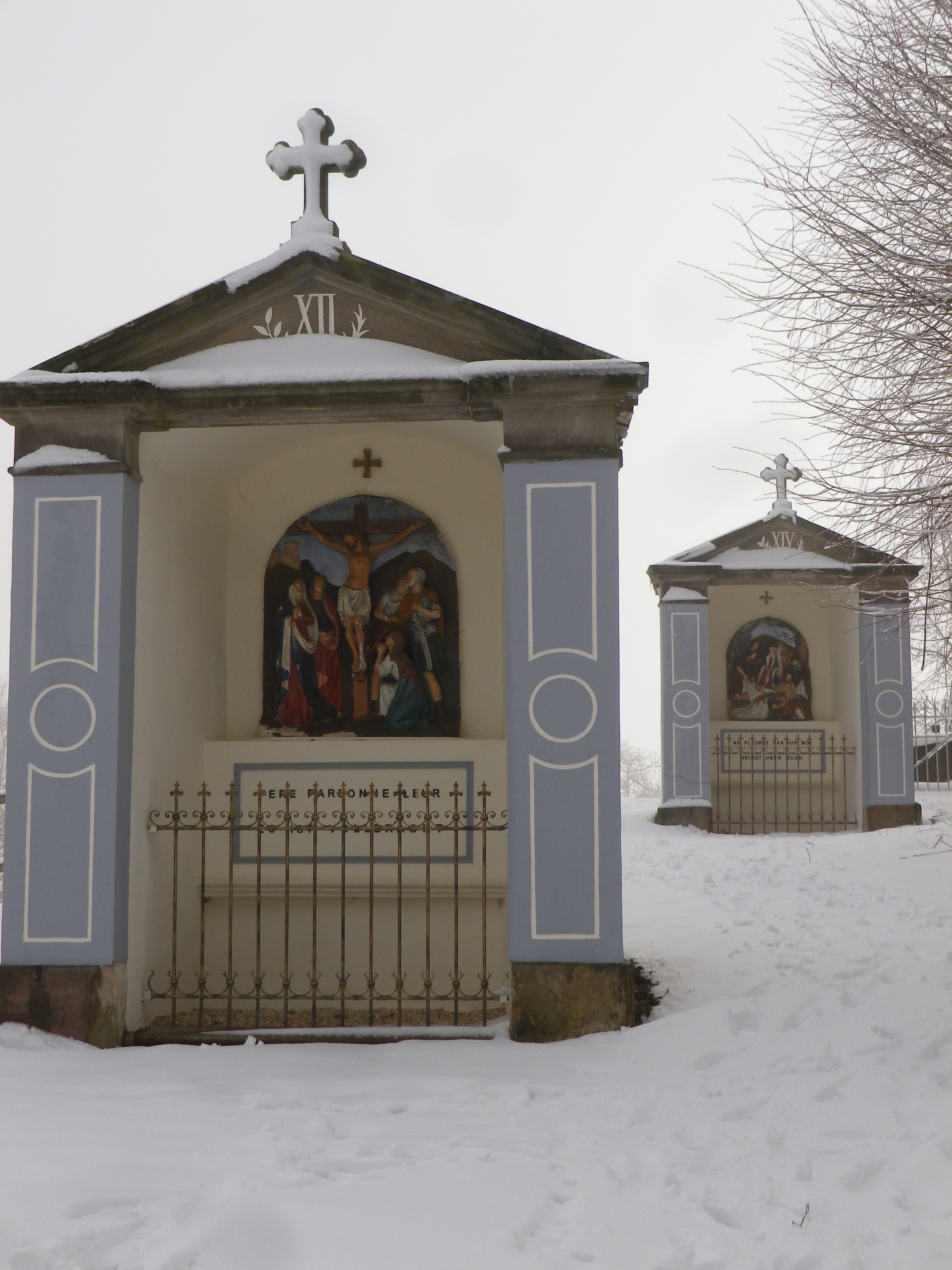
Once back in Rosheim, the trail led though the old eastern gate (Porte de la Vierge), to the Romanesque church of Saints Peter and Paul. The sculptural details both inside and outside are magnificent. Both pious and whimsical, these passionate primitive sculptures represent what I like best about Romanesque art.
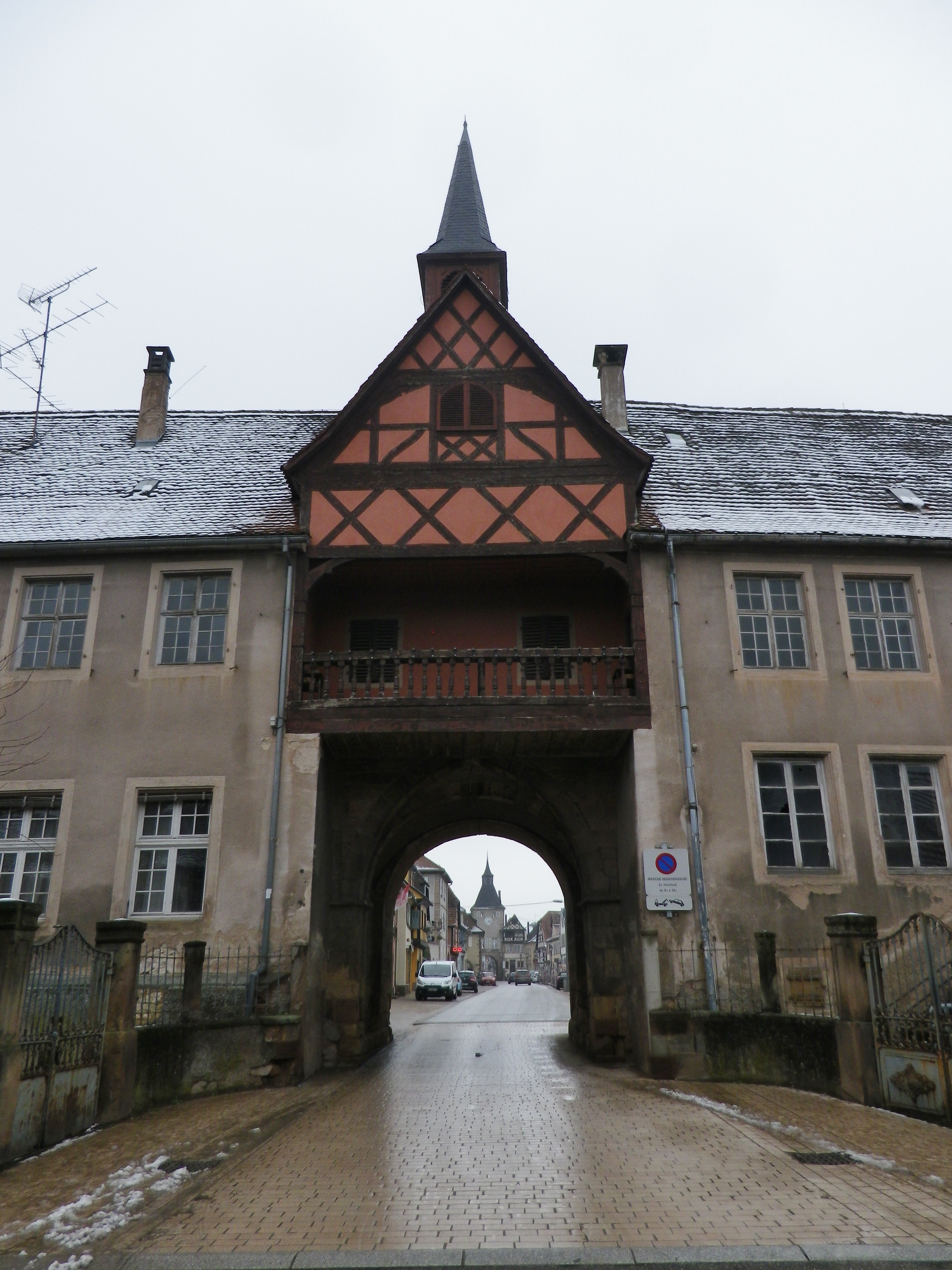
The trail continued around the apse of the church, heading through town and out the gate to the vineyards north of town. Since I had already completed some of that trail section and more on a previous hike (see here) I decided instead to join a friend for some vin chaud (mulled wine), another delightful old tradition during cold, snowy weather in Alsace!
